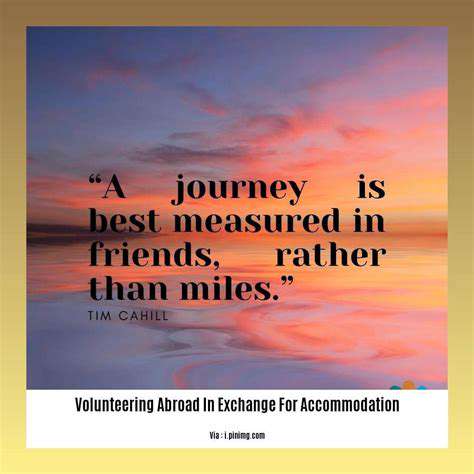The Importance of Cultural Sensitivity
Understanding Cultural Nuances
When capturing images of Indigenous communities, photographers must move beyond superficial awareness. True cultural sensitivity demands immersion in the community's worldview – their history, social fabric, and spiritual practices all shape how they should be represented. A photograph that seems harmless to outsiders might carry deeply offensive symbolism within the culture.
The most ethical approach involves extensive preliminary research combined with direct community consultation. Photographers should spend time building relationships before ever lifting a camera. This groundwork helps avoid distorted representations that could perpetuate harmful stereotypes.
Respecting Traditional Knowledge and Practices
Sacred sites and ancestral knowledge systems require particular reverence. Photographers must recognize that certain areas or practices may be completely off-limits to documentation. Explicit permission should always be obtained – not just from individuals, but often from community elders or cultural custodians.
Understanding local customs around image-making is equally crucial. Some communities have specific protocols regarding appropriate clothing for photographers, or may require ceremonial preparations before photography can occur. These traditions deserve the same respect as the photographic subjects themselves.
Seeking Informed Consent and Collaboration
Consent should be an ongoing conversation, not a one-time formality. Community members need clear explanations about how images will be used, distributed, and stored. They should retain the right to withdraw consent if cultural sensitivities emerge later.
True collaboration means involving community members at every stage – from planning shots to final image selection. This participatory approach helps ensure accurate representation while empowering communities to control their own narratives.
Avoiding Stereotypes and Misrepresentation
The camera's lens can easily flatten complex cultures into simplistic tropes. Ethical photographers consciously work against this tendency by highlighting the diversity and modernity that exists within Indigenous communities alongside traditional practices.
Every image should be evaluated for potential unintended messages. Does it reinforce outdated stereotypes? Does it reduce living cultures to museum exhibits? These critical questions help photographers avoid harmful misrepresentation.
Understanding the Potential Impact of Photography
Photographs never exist in a vacuum. They enter a historical continuum where Indigenous imagery has often been exploited. Photographers must consider how their work might be appropriated or misunderstood years after creation.
This awareness extends to digital contexts where images can spread uncontrollably. Establishing clear usage agreements and considering digital watermarks or other protections can help maintain cultural integrity in the online environment.
Understanding Context and Representation

Understanding the Significance of Context
Meaning derives from surroundings. The word bank illustrates this perfectly – without context, we can't know if it refers to finance or geography. This principle becomes exponentially more important when dealing with cultural representation, where miscontextualized information can cause lasting harm.
The Role of Context in Communication
Effective communicators act as context engineers. They anticipate what background knowledge their audience lacks and provide those missing pieces. In intercultural communication, this often means explaining cultural frameworks that may not be immediately apparent to outsiders.
Contextualizing Historical Events
History stripped of context becomes mythology. The complex factors surrounding events like colonial encounters require careful unpacking. Historical photographs especially demand contextual framing to avoid perpetuating skewed narratives.
Context in Scientific Research
Research methodologies carry cultural assumptions that often go unstated. Recognizing these embedded contexts helps prevent the universalization of culturally specific findings, particularly in social sciences studying Indigenous communities.
Contextualizing Personal Experiences
Personal narratives gain depth when framed within their cultural milieu. This approach avoids the trap of interpreting all human behavior through Western psychological models, instead respecting diverse cultural frameworks for understanding selfhood.












